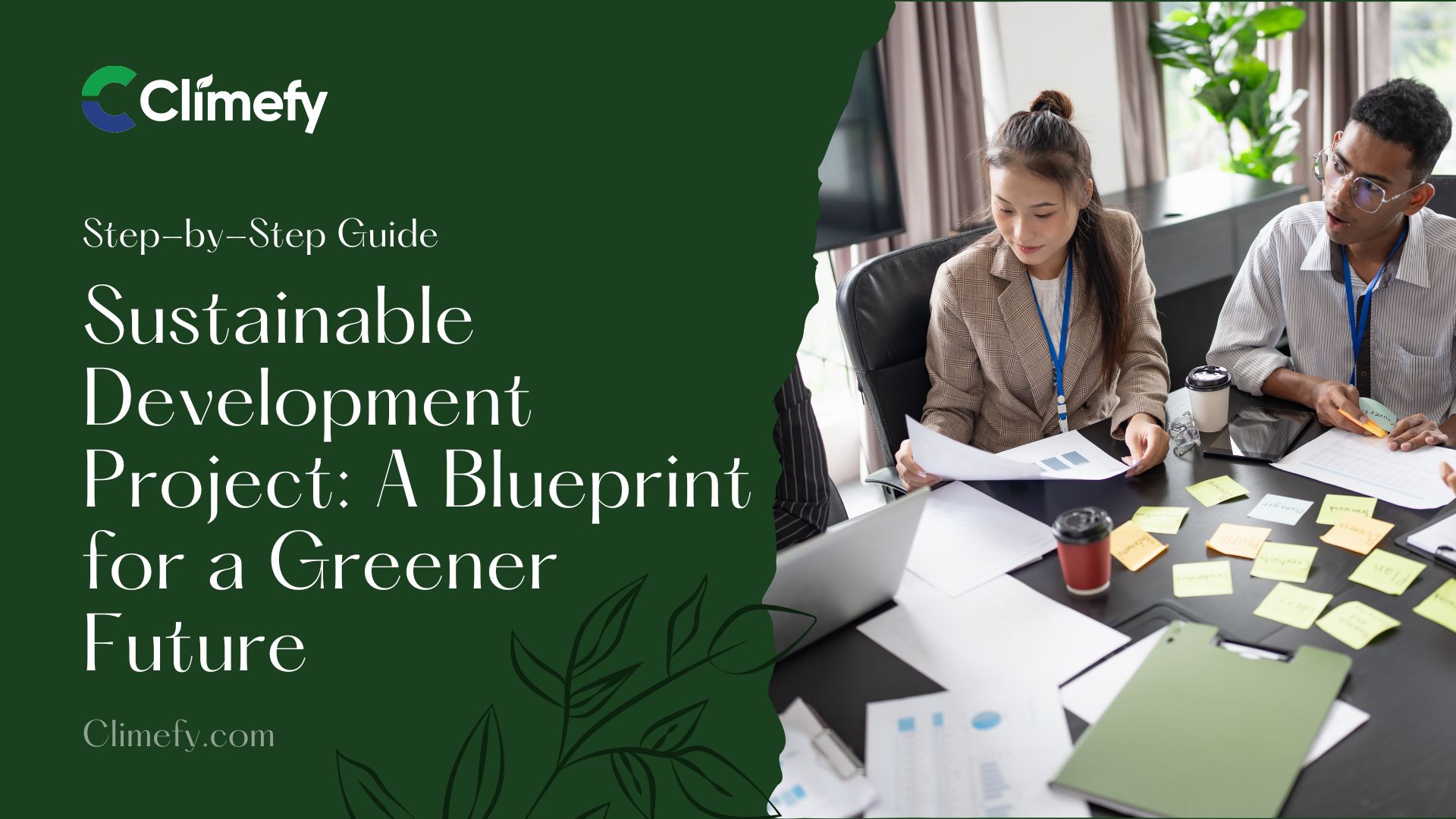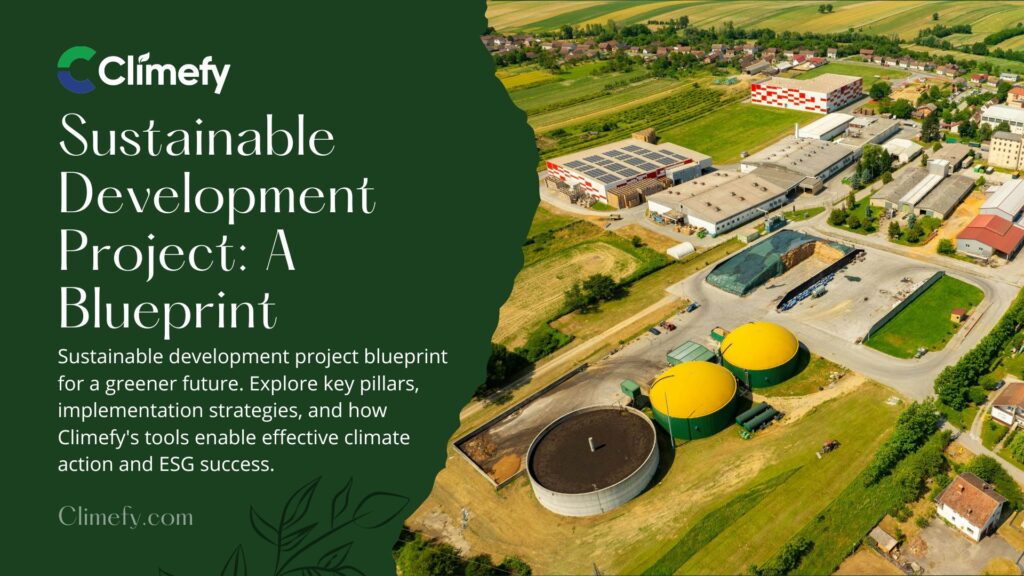

A sustainable development project is a strategically planned and managed initiative designed to meet human development goals while simultaneously sustaining the ability of natural systems to provide the natural resources and ecosystem services upon which the economy and society depend. This comprehensive blueprint will dissect the core principles, implementation frameworks, and measurable outcomes of successful sustainability initiatives, providing a definitive guide for businesses, governments, and communities.
In this definitive guide, you will learn:
Read More:

A sustainable development project is an interdisciplinary endeavor that seeks to address present-day needs without compromising the ability of future generations to meet their own. It moves beyond simple environmentalism, creating a synergistic framework where economic growth, social inclusion, and environmental stewardship are interconnected and mutually reinforcing.
The critical importance of these projects in the contemporary world is undeniable; they are no longer a niche interest but a fundamental imperative for mitigating climate change, preserving biodiversity, ensuring resource security, and fostering resilient, equitable societies. The escalating frequency of climate-related disasters, resource depletion, and social inequalities has thrust sustainability from a theoretical concept to an operational necessity for long-term planetary and economic health.
The core objective is to create a lasting positive impact, which is measured not just in financial returns but through a triple bottom line: People, Planet, and Profit.
The three core pillars of sustainable development—Environmental, Social, and Economic—form an interdependent triad where the success of one is intrinsically linked to the health of the others. Understanding this interconnectivity is crucial for designing projects that are truly sustainable and avoid unintended negative consequences. A project that is economically profitable but environmentally destructive is not sustainable, just as an environmentally sound project that causes social harm will ultimately fail. The goal is to find synergies where actions in one pillar positively reinforce the others.
This pillar focuses on the responsible management of natural resources to ensure their availability for the long term. It involves direct actions to mitigate human impact on the planet.
This pillar ensures that development benefits society as a whole, fostering inclusive, just, and participatory communities.
This pillar emphasizes the need for economic systems that are resilient, inclusive, and capable of providing for a population without depleting natural capital.
The interconnection is best visualized as a Venn diagram, where the ultimate goal of true sustainability lies at the center, where all three pillars overlap. For instance, a project like a community-based solar energy installation (Environmental) creates local jobs (Social) and provides a return on investment through energy savings and sales (Economic).
Implementing a successful, sustainable development project requires a meticulous, phased approach that integrates sustainability considerations at every stage. This structured methodology ensures that the project is not only conceived with good intentions but is also executable, measurable, and resilient to challenges. The following step-by-step guide provides a robust framework for turning a sustainability vision into a tangible reality.
This initial phase is about defining the project’s purpose and rigorously assessing its viability against the three pillars of sustainability.
In this phase, the conceptual idea is transformed into a detailed, actionable plan with clear benchmarks and resource allocation.
This is the action phase where the project plan is put into motion, and progress is continuously tracked against set indicators.
The final phase ensures that the project’s benefits are sustained long after the active implementation has concluded.
Carbon management is a systematic process for quantifying, reducing, and mitigating greenhouse gas (GHG) emissions, making it a non-negotiable component of any modern sustainable development project focused on climate action. It begins with a comprehensive carbon footprint analysis to establish a baseline of emissions across Scope 1 (direct), Scope 2 (indirect from purchased energy), and Scope 3 (all other indirect emissions in the value chain).
The primary goal is always to achieve emissions reduction at source through energy efficiency, fuel switching, and process improvements. However, for emissions that are currently unavoidable, carbon offsetting provides a mechanism to compensate for them by financing an equivalent reduction elsewhere, channeling capital towards vital climate mitigation projects.
A credible carbon offsetting strategy involves supporting verified projects that deliver real, additional, and permanent reductions in emissions. These projects, often located in developing countries, can include:
The integrity of the carbon market relies on rigorous standards and transparent registries. For example, the Climefy Verified Carbon Standard (CVCS) ensures that projects meet stringent criteria for environmental integrity. Furthermore, platforms like the Climefy Marketplace connect organizations with such verified projects, ensuring that their offset investments drive genuine climate action and contribute to sustainable development goals. For individuals and businesses starting their journey, using a carbon calculator for individuals or a corporate tool is the critical first step in this managed process.
The United Nations’ 17 Sustainable Development Goals (SDGs) provide a universal blueprint and a powerful framework for aligning any sustainable development project with global priorities. Integrating the SDGs is not about addressing all 17 goals simultaneously, but rather about strategically selecting the goals most relevant to the project’s scope and context and using them as a guide for setting targets, measuring impact, and communicating value. This integration enhances the project’s strategic focus, improves its attractiveness to investors and partners, and connects local actions to a global movement.
A practical approach to SDG integration involves a four-step process:
For instance, a company implementing a sustainable supply chain management project would directly contribute to SDG 12 (Responsible Consumption and Production). Still, it might also impact SDG 8 (Decent Work and Economic Growth) through fair labor practices and SDG 13 (Climate Action) by reducing logistics-related emissions. Educational resources like those offered by the Climefy Sustainability Academy can be instrumental in training teams on how to effectively apply the SDG framework to their specific projects and corporate strategies.
Despite the clear benefits, executing a sustainable development project is fraught with challenges that can derail even the most well-intentioned initiatives. Recognizing these hurdles and developing proactive strategies to overcome them is a critical success factor. The challenges are often interconnected, spanning financial, technical, and governance domains.
The table below outlines common challenges and their corresponding mitigation strategies:
| Challenge | Description | Potential Solutions and Mitigation Strategies |
|---|---|---|
| Financial Constraints & High Upfront Costs | Sustainable technologies and processes often require significant initial investment, deterring stakeholders. | Pursue green financing options like green bonds, impact investing, and public-private partnerships. Leverage grants and subsidies for clean tech. Demonstrate a strong business case with a clear ROI, including long-term cost savings from efficiency. |
| Technical Complexity & Lack of Expertise | Projects may involve advanced, unfamiliar technologies or require specialized knowledge in areas like carbon accounting or life cycle assessment. | Invest in capacity building and training for the project team. Partner with expert consultants and research institutions. Utilize digital platforms and tools, such as Climefy’s Digital Integration Solutions, to streamline complex tracking and reporting tasks. |
| Regulatory and Policy Uncertainty | Inconsistent or rapidly changing environmental regulations can create risks and planning difficulties. | Conduct thorough regulatory scans and engage with policymakers. Build flexibility and adaptive capacity into the project design. Advocate for stable, long-term policy frameworks that support sustainability. |
| Stakeholder Resistance & Behavioral Change | Projects can face opposition from communities, internal staff, or consumers resistant to change or concerned about costs or disruptions. | Implement a robust and continuous stakeholder engagement plan from the outset. Communicate benefits clearly and transparently. Involve stakeholders in co-designing solutions to foster ownership and address concerns. |
| Data Management and Measurement | Accurately tracking sustainability metrics (e.g., carbon footprint, social impact) can be complex and resource-intensive. | Utilize specialized software and digital integration solutions for automated data collection and analysis. Start with a focused set of key metrics rather than trying to measure everything at once. Use established standards for reporting. |
The field of sustainable development is dynamic, continuously evolving with new technologies, innovative business models, and shifting global priorities. The future of these projects will be increasingly data-driven, interconnected, and focused on systemic transformation rather than isolated solutions. Understanding these emerging trends is essential for any organization aiming to stay at the forefront of climate action and sustainable practice.
Several key trends are poised to redefine the landscape:
A traditional project typically evaluates success primarily on financial metrics like budget and timeline, often considering environmental and social factors as externalities or constraints. A sustainable development project, however, integrates environmental protection, social equity, and economic viability as core, non-negotiable objectives from the outset. Its success is measured by the triple bottom line, ensuring positive outcomes for people, planet, and profit simultaneously.
The cost is highly variable and depends on the project’s scale, scope, and technological complexity. While upfront costs for sustainable technologies can be higher, they often lead to significant long-term savings through improved efficiency, reduced resource consumption, and lower waste disposal costs. A thorough cost-benefit analysis that includes these long-term savings and potential risks (like future carbon taxes) is essential. Utilizing tools like a carbon calculator can help quantify potential savings from emission reductions.
Absolutely. Sustainability is not exclusive to large corporations. For SMEs, the approach can be more focused and incremental. Starting with a carbon footprint analysis using a dedicated <a href=”https://dashboard.climefy.com/register” target=”_blank”>calculator for small businesses</a> is an excellent first step. From there, SMEs can implement cost-effective measures like improving energy efficiency, reducing waste, sourcing materials sustainably, and exploring the procurement of high-quality carbon offsets to achieve their climate goals.
Greenwashing is the practice of making misleading or unsubstantiated claims about the environmental benefits of a product, service, or project. To avoid it, ensure all sustainability claims are transparent, accurate, and backed by verifiable data. Adhere to recognized standards and frameworks for reporting (like GRI or SASB), obtain third-party certifications for your claims, and be honest about your journey, including the challenges and areas for improvement.
Success is measured using a balanced scorecard of indicators across the three pillars. Key metrics often include:
Environmental: Tons of CO2e reduced (carbon footprint), percentage of waste diverted from landfill, water saved, and hectares of land restored.
Social: Number of jobs created, community satisfaction scores, improvements in health and safety metrics, and hours of training provided.
Economic: Return on Investment (ROI), cost savings from efficiency, revenue from sustainable products, and value of investments attracted.